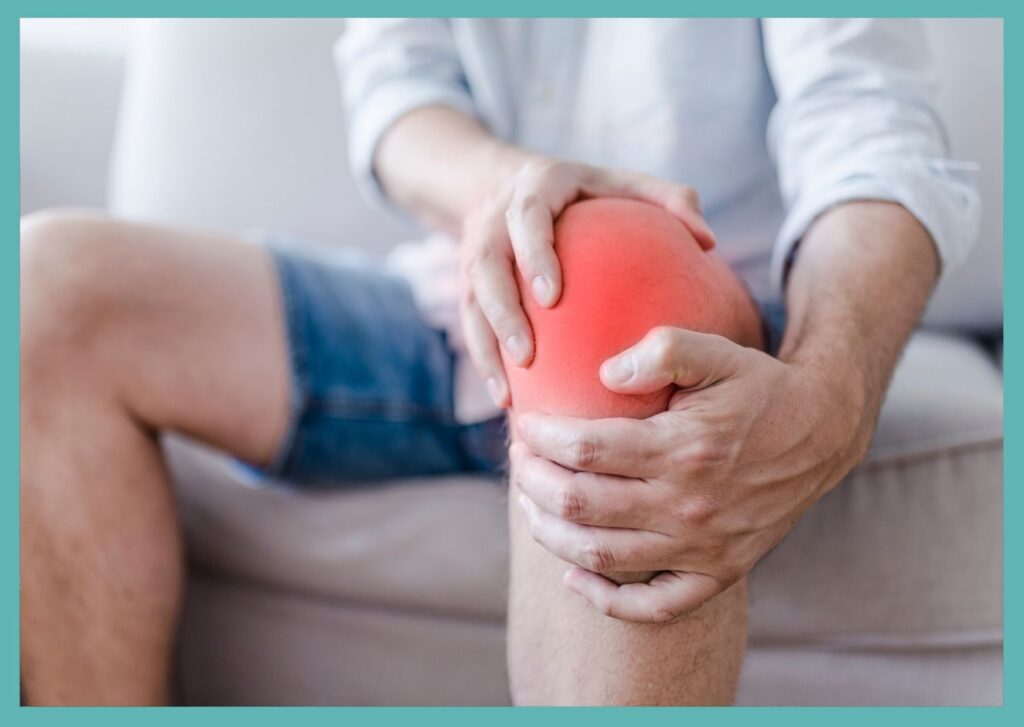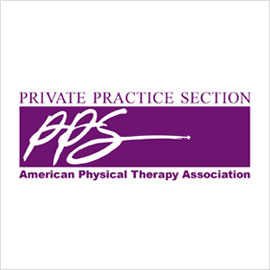Knee pain can be caused by disease or injury. Among American adults, approximately 25% have experienced knee pain affecting the function of the knee. The prevalence of knee pain has increased over the past 20 years, with osteoarthritis being the most common cause in individuals over the age of 50. Knee pain that is caused by injury is most often associated with knee cartilage tears. Knee injuries can occur as the result of a direct blow or sudden movement that strains the knee beyond its normal range of movement. Knee pain can cause difficulty performing activities such as walking, rising from a chair, climbing stairs, or playing sports. Physical therapists are specially trained to help diagnose and treat knee pain, and help individuals return to their normal activities without pain or limitation.
What is Knee Pain?
The knee joint is a hinge joint that connects the tibia (shin bone), and the femur (thigh bone) at the patella (kneecap). There are 4 main ligaments that support the knee joint. They are the anterior cruciate ligament (ACL); posterior cruciate ligament (PCL); medial collateral ligament (MCL); and lateral collateral ligament (LCL). There are also 2 rings of cartilage that act as shock absorbers in the knee, called the medial and lateral meniscus.
The most common cause of knee pain is osteoarthritis, a condition that occurs when the cartilage that protects the inside surfaces of the tibia and femur bones called articular cartilage gradually wears away, resulting in pain and swelling in the knee.
How Does it Feel?
Knee pain can occur suddenly for no apparent reason or develop slowly, as the result of repetitive trauma. Knee pain occurs in different parts of the knee, depending on what structures in the knee are involved. Below is a general breakdown of the areas in which knee pain may occur and the structures of the knee that may be involved:
- Anterior knee pain, also referred to as patellofemoral pain, is pain around the kneecap (patella) in front of the knee, caused when the kneecap shifts out of position. This condition commonly affects younger females and may be due to overuse injury. Pain often occurs when performing activities like squats or stair-climbing.
- Lateral knee pain is pain that occurs on the outside of the knee. It is a type of overuse injury that commonly occurs in runners when the tendon called the iliotibial band (ITB) becomes irritated. Pain is often felt when performing activities such as climbing stairs, or when walking or running.
- Medial knee pain is pain that occurs along the inside of the knee when the MCL or the medial meniscus become irritated due to direct injury or overuse. Pain is felt when squatting, walking up or down an incline, or going downstairs.
- Pain caused by a ligament tear may result from a direct blow to the knee, or when twisting or pivoting the knee while the foot is planted on the ground. Immediate pain and swelling usually occur, and the knee may feel unstable—like it will “give out”—when an individual attempt to put weight on the involved leg.
- Pain caused by osteoarthritis may occur anywhere in the knee where cartilage has broken down. This type of knee pain may begin as mild and progressively worsen. It can become increasingly difficult to walk long distances, fully bend and straighten the knee, climb stairs, or squat to sit in a chair. The knee also may swell intermittently with increased activity.
How Is It Diagnosed?
Your physical therapist will make a diagnosis based on your symptoms, medical history, and a thorough examination. Your physician may order an X-ray and magnetic resonance imaging (MRI) to complete the diagnosis.
Your physical therapist will perform an evaluation that will start with discussing your medical history and your symptoms. Your therapist will ask questions to determine where your pain is located, if you sustained any trauma or injury to the knee, and what functional daily activities are painful or difficult for you to perform. Your physical therapist will perform tests to find out if you have:
- Limited range of motion in the knee.
- Pain in the knee with certain movements.
- Weakness in the muscles around your hip, knee, or ankle.
- Limited flexibility in your hip, knee, or ankle.
- Difficulty walking.
- Difficulty performing activities, such as rising from a chair or climbing stairs.
- Problems with your balance or coordination.
- Difficulty controlling the knee during certain activities.
- Difficulty performing specific sports activities (for athletes).
How Can a Physical Therapist Help?
Based on the findings of your evaluation, your physical therapist will develop a customized rehabilitation program to ensure a safe return to your desired activities. Some general treatment techniques may include:
- Pain management. Your physical therapist may provide treatments using different “modalities” such as ice, heat, ultrasound, or electrical stimulation to help decrease pain and swelling.
- Manual therapy. Your therapist will apply manual (hands-on) therapy to gently guide movement of the knee area to restore joint and tissue mobility.
- Therapeutic exercises. Your physical therapist will prescribe specific strengthening, flexibility, and endurance exercises to address your specific needs and goals.
- Functional exercises. You will learn individualized exercises designed to help you return to your home, work, and sport activities. These also may include balance and coordination exercises.
- Self-care instruction. Your physical therapist will teach you ways to manage your pain at home and design a safe and effective home-exercise program based on your specific condition, which you can continue long after your formal physical therapy sessions have ended. You also will learn how to avoid placing unnecessary forces on the knee during your daily activities for years to come.
How Can a Physical Therapist Help Before & After Surgery?
Your physical therapist, in consultation with your surgeon, will be able to tell you how much activity you can do depending on the type of knee surgery (such as total knee replacement) you undergo. Your therapist and surgeon also might have you participate in physical therapy prior to surgery to increase your strength and motion. This can sometimes help with recovery after surgery.
Following surgery, your physical therapist will design a personalized rehabilitation program for you and help you gain the strength, movement, and endurance you need to return to performing the daily activities you did before.
Can this Injury or Condition be Prevented?
To help reduce knee pain, it is important to maintain a healthy lifestyle, perform regular safe exercise, get adequate rest, and eat healthy foods. Weight management is important for maintaining healthy knee function, as increased body weight puts extra pressure on all the joints, including the knees. Ideally, individuals of all ages should regularly perform some form of flexibility, strength, and heart-conditioning exercises.
It also is important for athletes to perform appropriate warm-up exercises and stretches on a daily basis and before beginning physical activity.
CAUTION: If any exercise or activity provokes knee pain, seek professional help before the symptoms worsen.
What Kind of Physical Therapist Do I Need?
All physical therapists are prepared through education and experience to treat knee pain. However, you may want to consider:
- A physical therapist who is experienced in treating people with knee pain. Some physical therapists have a practice with an orthopedic and sports medicine focus.
- A physical therapist who is a board-certified clinical specialist or who completed a residency or fellowship in orthopedic, manual, or sports physical therapy. This therapist has advanced knowledge, experience, and skills that may apply to your condition.
General tips when you’re looking for a physical therapist (or any other health care provider):
- Get recommendations from family and friends or from other health care providers.
- When you contact a physical therapy clinic for an appointment, ask about the physical therapists’ experience in helping people who have underlying knee pain.
- During your first visit with the physical therapist, be prepared to describe your symptoms in as much detail as possible, and say what makes your symptoms worse.








